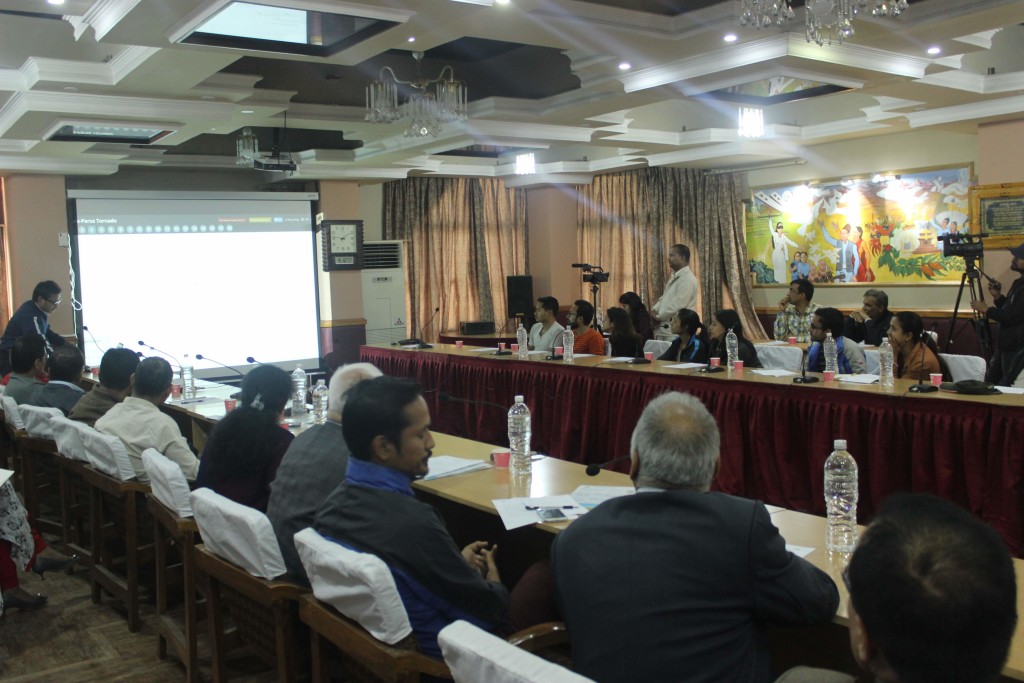The Small Earth Nepal (SEN) and Nepal Academy of Science and Technology (NAST) organized a program entitled “Meet Your Scientists Program on Bara-Parsa Tornado” on 12 April 2019 at NAST, Lalitpur. The main aim of the program was to share the first-hand scientific information the Bara Parsa tornado with scientists, researchers, and media.
The program was chaired by Prof. Suresh Raj Chalise, Advisor to SEN. Ms. Ramila Raut, Chief of Promotional Division, NAST welcomed the participants and presenters highlighting the main purpose of the program. Dr. Madan Lall Shrestha, academician of NAST and advisor of SEN presented on “Tornado in Nepal”. Dr. Shrestha shed light upon the importance and necessity of incorporation of policy in the present situation. He shared that the media played a very important role in covering this issue and spread the news to the public. He explained the phenomenon of tornado formation and talked briefly about how tornado damages infrastructures. He highlighted that we were unaware and unprepared for tackling such intense meteorological phenomenon causing heavy damages to life and property and considered this tornado to be a wake-up call. He urged a need for research on such event and especially so the aftermath of such natural disasters with the allocation of appropriate budget.
Mr. Piyush Dahal, Research Coordinator of SEN, summarized the research steps taken for verifying the tornado and the evidences that matched the common signs of a tornado. He shared how the research team confirmed the country’s first tornado using social-media posts, satellite images, and field visit. Mr. Nammy Hang Kirat, Senior Research Associate of SEN, presented the devastation caused by the Bara-Parsa tornado by sharing the visual story of the affected areas. He shared the different signature of the tornado on-field through photographs and videos.
Dr. Archana Shrestha, Senior Divisional Meteorologist, Department of Hydrology and Meteorology (DHM) summarized the field visit observations and the damage pattern analyses. Dr. Shrestha accentuated the signs, for instance, circular orientation of fallen trees, twisted and snatched bamboo plants, spinning of a truck weighing more than 20 tons, displacement of concrete roofs 80 meters away and the descriptions of the storm by local people, which matched the characteristics of a tornado. Dr. Shrestha urged a need for disaster preparedness, raising awareness and formulating and establishment of severe weather nowcasting system. In addition, she also emphasized a need for detail research on Bara-Parsa tornado.
The presentations were followed by an extensive discussion session. The questions raised were clarified by the presenters. Prof. Chalise gracefully ended the program with his words of wisdom and suggested the policy-makers and government officials contributing to the investigation.




